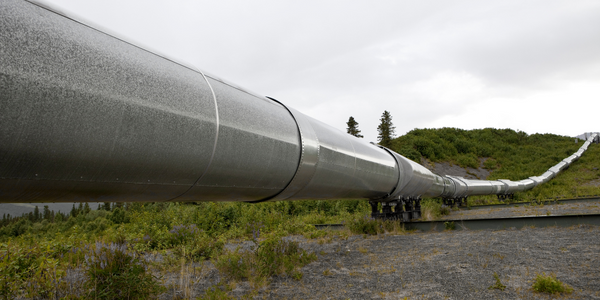公司规模
SME
地区
- Europe
国家
- United Kingdom
产品
- DocuWare Solution
- Destiny Digital Pen
- Destiny Digital Pad
- Solarvista software
技术栈
- Bluetooth
- Infrared Camera
- Digital Paper Technology
- Server Technology
影响指标
- Productivity Improvements
- Cost Savings
- Customer Satisfaction
技术
- 应用基础设施与中间件 - 数据交换与集成
适用功能
- 现场服务
- 人力资源
用例
- 远程资产管理
- 库存管理
服务
- 系统集成
- 软件设计与工程服务
关于客户
Serviceline 是一家成立于 1989 年的公司,与食品服务行业密切合作,维护厨房/餐饮设备和器具。该公司为餐厅、医院和体育场等场所的所有主要商业餐饮设备品牌提供安装、保修和紧急服务支持。Serviceline 拥有 173 名员工,其中 120 名是工程师。这些工程师配备了数字笔和平板电脑来填写现场服务报告 (FSR)。该公司自 2005 年以来连续获得年度国际安全奖,这可能部分归功于其组织良好的文档流程。
挑战
Serviceline 是一家提供厨房/餐饮设备维护和维修服务的公司,它面临着多项挑战。该公司正在处理大量通过邮件发送的纸质现场服务报告 (FSR),至少需要两到三天才能到达。然后,这些报告必须由作业经理手动编制索引。这个过程既耗时又低效。此外,该公司还需要为其客户和供应商保留信息,这导致需要大量的物理存储空间。该公司还希望改进其客户服务和发票控制流程。
解决方案
Serviceline 实施的解决方案结合了 DocuWare 解决方案、Destiny 数字笔和平板以及 Solarvista 软件。数字笔和平板允许工程师完成 FSR 并以电子方式发送,从而大大缩短了接收和处理这些报告所需的时间。DocuWare 解决方案可用作这些报告以及其他文档(如人力资源文件、采购订单和发票)的存储库。Solarvista 软件用于正确索引和跟踪工时。该解决方案还允许拍摄旧零件的照片并通过电子邮件发送给 FSR,确保可以立即购买准确的替换零件。该解决方案已在整个公司实施。
运营影响
数量效益

Case Study missing?
Start adding your own!
Register with your work email and create a new case study profile for your business.
相关案例.
.png)
Case Study
Improving Vending Machine Profitability with the Internet of Things (IoT)
The vending industry is undergoing a sea change, taking advantage of new technologies to go beyond just delivering snacks to creating a new retail location. Intelligent vending machines can be found in many public locations as well as company facilities, selling different types of goods and services, including even computer accessories, gold bars, tickets, and office supplies. With increasing sophistication, they may also provide time- and location-based data pertaining to sales, inventory, and customer preferences. But at the end of the day, vending machine operators know greater profitability is driven by higher sales and lower operating costs.

Case Study
Remote Wellhead Monitoring
Each wellhead was equipped with various sensors and meters that needed to be monitored and controlled from a central HMI, often miles away from the assets in the field. Redundant solar and wind generators were installed at each wellhead to support the electrical needs of the pumpstations, temperature meters, cameras, and cellular modules. In addition to asset management and remote control capabilities, data logging for remote surveillance and alarm notifications was a key demand from the customer. Terra Ferma’s solution needed to be power efficient, reliable, and capable of supporting high-bandwidth data-feeds. They needed a multi-link cellular connection to a central server that sustained reliable and redundant monitoring and control of flow meters, temperature sensors, power supply, and event-logging; including video and image files. This open-standard network needed to interface with the existing SCADA and proprietary network management software.

Case Study
Hospital Inventory Management
The hospital supply chain team is responsible for ensuring that the right medical supplies are readily available to clinicians when and where needed, and to do so in the most efficient manner possible. However, many of the systems and processes in use at the cancer center for supply chain management were not best suited to support these goals. Barcoding technology, a commonly used method for inventory management of medical supplies, is labor intensive, time consuming, does not provide real-time visibility into inventory levels and can be prone to error. Consequently, the lack of accurate and real-time visibility into inventory levels across multiple supply rooms in multiple hospital facilities creates additional inefficiency in the system causing over-ordering, hoarding, and wasted supplies. Other sources of waste and cost were also identified as candidates for improvement. Existing systems and processes did not provide adequate security for high-cost inventory within the hospital, which was another driver of cost. A lack of visibility into expiration dates for supplies resulted in supplies being wasted due to past expiry dates. Storage of supplies was also a key consideration given the location of the cancer center’s facilities in a dense urban setting, where space is always at a premium. In order to address the challenges outlined above, the hospital sought a solution that would provide real-time inventory information with high levels of accuracy, reduce the level of manual effort required and enable data driven decision making to ensure that the right supplies were readily available to clinicians in the right location at the right time.










